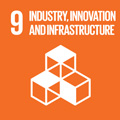- Docente: Gabriele Bellani
- Credits: 3
- SSD: ING-IND/06
- Language: English
- Teaching Mode: Traditional lectures
- Campus: Forli
-
Corso:
Second cycle degree programme (LM) in
Aerospace Engineering (cod. 5723)
Also valid for Second cycle degree programme (LM) in Aerospace Engineering (cod. 5723)
-
from Oct 04, 2023 to Dec 12, 2023
Learning outcomes
At the end of the module, by applying acquired in the courses of basic physics and fluid mechanics, the student will be able to describe the main physical mechanisms underlying the generation of lift and drag on the aircraft or on its individual components. Mathematical models will be introduced to carry out numerically, where this is possible, an initial estimate of these force components.
Course contents
1. Airforil Theory: Review of fundamental equations and boundary layer theory. Description and nomenclature - Lift generation - Pressure distribution and performance analysis; Numerical estimation methods of lift on airfoil sections: Potential flow theory - thin-foil theory - panel methods; Methods of estimation of Drag: flat plate theory - form drag; Polar graph of airfoils; FLaps and slats; Compressibility effects: Prandl-Glauert corrections.
2. Three-dimensional wings: general description; vorticity and velocity fields over a finite wing; Wake and induced drag; Methods of estimating lift on 3-D wings: lift-line theory; Effect of swept wings; Computational methods of drag; Three-dimensional boundary layer; Stall on 3-D wings, Polar of 3-D wings; Delta wings
Readings/Bibliography
Elements of Fluid-Dynamics - G. Buresti
Fundamentals of Aerodynamics - J-D. Andersson
Lecture Notes
Teaching methods
Whiteboard and Slide-supported lectures
Excercises
Assessment methods
The exam consists of a single oral session. To pass the exam, the student must demonstrate sufficient knowledge of all the fundamental aspects underlieng the mechanism of generation of lift and drag, of the mathematical models to make quantitative predictions and of the main engineering results presented in the course.
To a positive evaluation will contribute the clarity of explanation as well as the ability of making connections between the mathematical models and the underlying physical and engineering aspects of the subjects covered.
Teaching tools
Lecture notes and PPT slides
Matlab codes
Simulation tools
Office hours
See the website of Gabriele Bellani
SDGs

This teaching activity contributes to the achievement of the Sustainable Development Goals of the UN 2030 Agenda.
